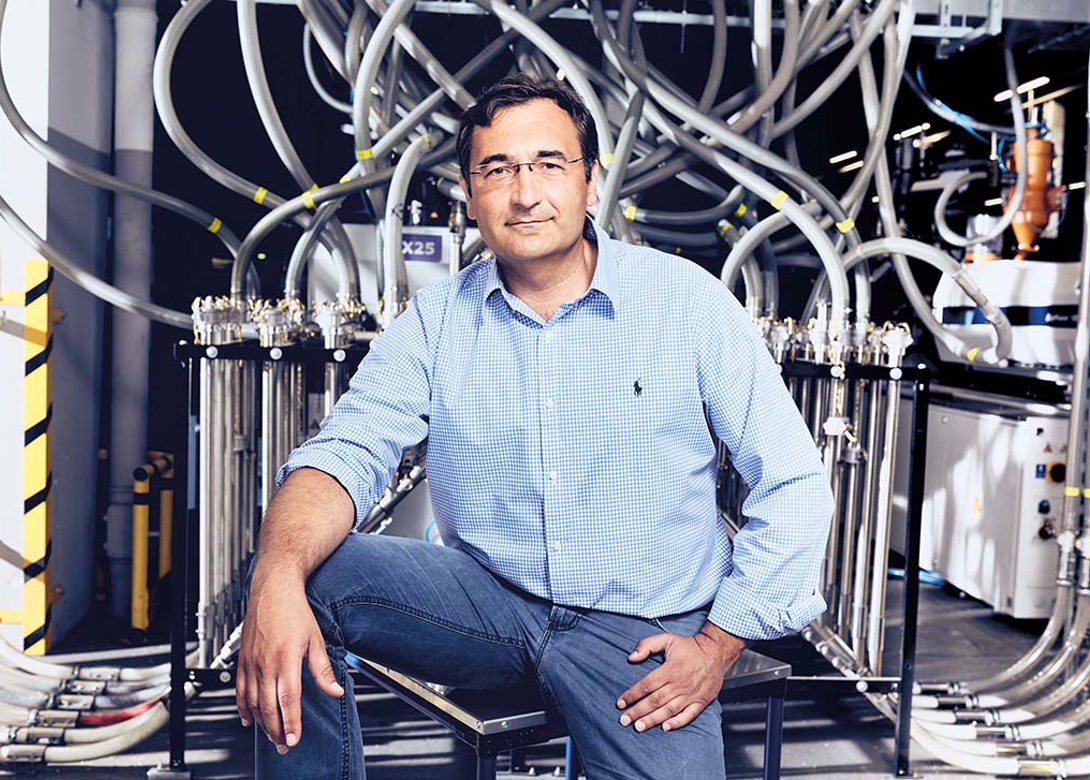
A review and preview of the global fastener market
Named after the Roman god who is often depicted as having two faces – due to its ability to look to the future and to the past – the Janus Perspective is a unique feature that includes a wide cross section of global fastener business leaders, who have all contributed their retrospective of 2021 and thoughts on prospects and challenges for 2022.

Radoslaw Koelner, CEO
I think of the year 2021 with genuine satisfaction. Rawlplug, as a business, has proved its worth and proved its ideals. It has undoubtedly been a year of intense work for us, but we have also experienced a lot of anxiety about the present, our nearest and dearest, and about our future.
In historical terms, this period may well be perceived as the true beginning of the 21st Century – a century of great opportunity and innovation, but for those who manage businesses, also a century of numerous socio-economic challenges.
Deglobalisation, protectionism, socialism in the social and economic sphere, inflation, the USA and China parting ways, cyber attacks, blackout threats, new monetary and fiscal policy, not to mention the pandemic, and climate change, are all phenomena that shape our reality, and no harbingers of them de-escalating are to be seen. These used to be but theoretical notions for us. However, in 2022 and the following years, we will face them for real.
For two years, the current cycle has been completely transforming our supply chain before our eyes. This process started in 2007 and has been gradually changing for the last decade. Raw materials have been exposed to a very strong deflation pressure. Both the pandemic, as well as quantitative easing, have led us to the point where the raw material cycle is rebounding to levels that have not been observed worldwide for 20 – 30 years.
If you consider this problem from the perspective of decades, and not just a few years or several terms of office of governments imposing their political perspective upon us, this appears to be a natural economic cycle. Such a cycle will not only define the actual strategies of businesses, but also determine if they thrive or fall into decline. It will lead us to even faster transition and enormous deficits in virtually all raw material spheres.
There are no raw materials that are not going to eventually run out or which are already not in short supply, their deficit reaching 20% – 40%.
We are discussing matters such as the raw material crisis and are surprised by the reality of this day and age, so we should definitely focus on the supply chain and prices, but we mustn’t forget about the historical context, because all these components are just perfectly matching. We are witnessing what recent generations have not, namely an abrupt and unstoppable rise in raw material prices, combined with availability issues. And I mean all raw materials.
Only companies with a strong balance sheet will survive this. I hope that successful pursuit of raw materials is determined by financing in 30%, while the remaining 70% is attributable to skills and relationships. However, this represents an enormous hurdle for newly established organisations that intend to use raw materials.
There will be a shortage of the simplest products in the market, and just because the share of raw materials is the highest in the least complex products, this automatically leads those manufacturers, which deliver more highly processed products, to cannibalisation. That is precisely what you can already observe in the automotive market.
It is also not merely a matter of the business scale. What matters is the relationships, the right geographical positioning of the manufacturing site, and the product itself. We are witnessing the new reality unfolding. Innovations bring us solutions and guide us to the right path. The 2020s, and probably the entire 21st Century, will prove to be the age of artificial intelligence, robots, automation and machine learning. SDRs, cryptocurrencies and soon also the new Bretton Woods system will define the world of finance.
Communication will mostly become virtual, while travelling will be rarer and far more expensive on account of the necessity to reduce CO2 emissions. The years 2021 and 2022 will be very much alike in terms of the geopolitical situation, but human habits will change. Back in 2019, were you asking yourself such questions as “what will the next day bring?” Today, it is among the most reasonable ones.
The fastener and fixing industry is an exciting and inspiring sphere and that is precisely for the amount and value of the available information that is original, genuine and untampered. It is the mirror showing us if the problems at hand, as well as their scope and urgency, actually grow or dwindle. I think that the wind of change is blowing with increasing might, forcing us to choose whether we should set sail or drop the anchor.

Will joined Fastener + Fixing Magazine in 2007 and over the last 15 years has experienced every facet of the fastener sector - interviewing key figures within the industry and visiting leading companies and exhibitions around the globe.
Will manages the content strategy across all platforms and is the guardian for the high editorial standards that the Magazine is renowned.
Don't have an account? Sign Up
Signing up to Fastener + Fixing Magazine enables you to manage your account details.